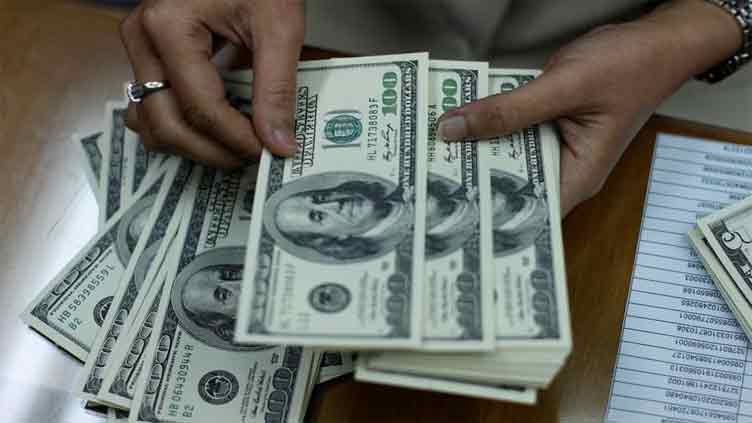Cheer up Pakistan as analysts see a weakened dollar ahead

Business
The greenback hit an 11-month high this week
BENGALURU/LAHORE (Web Desk/Reuters) – With the rupee in Pakistan making the lost ground in recent weeks, there is a possibility of some good news with long-term consequences, as a latest Reuters poll says foreign exchange strategists are sticking with their forecasts for a weaker dollar despite having been wrong-footed for years in predicting a downturn in the greenback.
The Pakistan rupee has made substantial gains after hitting new record-low exchange rates in both interbank and open market trading last month.
However, the positive changes being witnessed in Pakistan are more due to the crackdown on market manipulators – not because of the economic growth – who had caused the historic and persistent rupee depreciation by resorting to hoarding and smuggling dollar.
Now, the question is whether Pakistan would be able to sustain this rupee appreciation and how the possible weaker dollar in global currency markets is going to affect the country.
According to Reuters, the dollar hit an 11-month high this week and is up nearly 3.5 per cent this year against a basket of currencies as expectations that US interest rates will stay higher for longer take hold.
Much of the greenback's strength has been driven by Treasury yields, which have soared to 16-year highs, based on the resilience of the US economy in the face of the Federal Reserve's interest rate rises since March 2022.
That outlook remains at odds with the consensus view in Reuters foreign exchange polls, including the latest Oct 2-4 survey of 80 FX strategists, which showed forecasters still expect the dollar to weaken against most major currencies.
Adam Cole, the chief currency strategist at RBC, says he is biased toward a stronger dollar but admits the prevailing foreign exchange view in markets remains a tough nut to crack.
"If you look at consensus forecasts, the consensus has been dollar negative for five years now and it hasn't worked," Cole said. "I don't think the timing is right for that call yet."
Net US dollar positioning by traders was long for the second week in a row, according to the latest Commodity Futures Trading Commission data.
Despite a base case that showed the dollar weakening over the 12-month polling horizon, analysts who answered additional questions in previous polls have repeatedly said their bias was for the greenback to strengthen in the near-term period.
EURO'S UPSIDE LIMITED
The dollar has dominated nearly all major currencies this year, demonstrating particular strength against the currencies of countries whose central banks didn't hike rates or failed to keep up with the Fed's monetary tightening.
One notable outlier among major central banks is the Bank of Japan, which has made the yen one of the worst-performing major currencies this year, down over 13pc. Trading below 150 per dollar on Tuesday, it was expected to recoup more than 10pc in a year to trade at 135 per dollar.
"If they (BOJ) keep on threatening and they don't do it, finally, the market's going to say you're not going to intervene and dollar/yen moves higher, so it's a bit of a poker game," said Jane Foley, head of FX strategy at Rabobank.
"The longer they can get away with verbal intervention the better. As far as they're concerned they keep their powder dry."
Losses among most major emerging market currencies polled by Reuters ranged between around 2pc to as much as 32pc, and they were not expected to recoup those losses over the coming year.
At roughly $1.05, the euro was faring better than the yen and emerging market currencies. But it is down 2pc on the year, far behind where most expected it to be in a January poll, when the consensus view was for about a 4pc rise against the dollar by the end of this year.
While the euro was forecast to claw back all of those losses and gain around 6pc in the next 12 months, the currency's upside will be limited by a weak euro zone economy and expectations the European Central Bank is done hiking rates.
Among 20 analysts who answered a separate question on how low the euro will go this month, the median view was $1.04, with only one respondent saying the currency would touch parity. But no forecaster had a parity call anywhere in their point predictions.
"We talked about putting parity on the forecast table and in the end we didn't, only because when you start putting parity on the forecast table, it just creates a little bit too much attention. So we went for $1.02," Rabobank's Foley said.
"I think if the euro is down at $1.03, $1.04, quite obviously people will be talking about the risks of parity, it will become a lot closer and I will not rule it out for early next year."

